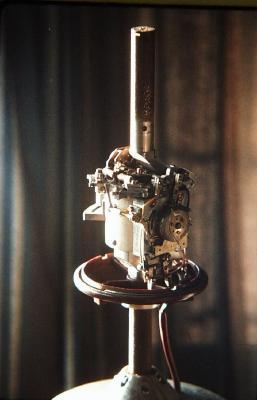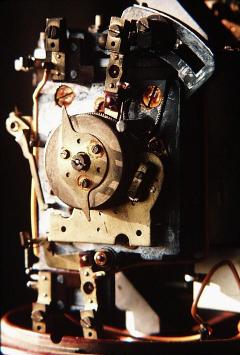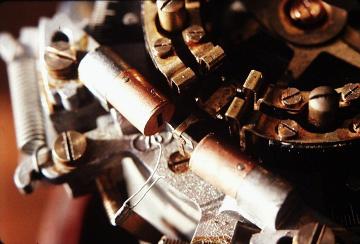The German WWII Magnetic Mine
|
The magnetic mine — as distinct from the more familiar floating contact mine
(the one with the spikes, familiar from the movies) — lies in wait on the
sea bottom. A ship passing tens of metres above (unless
'degaussed') distorts
the normal Earth's magnetic field enough to trigger the mine.
(A different type of device is also sometimes referred to as a "magnetic mine". The Limpet Mine is "magnetic" in the sense that it has a hefty magnet that lets an operator attach it personally to the hull of a ship, to be detonated when he is at a safe distance. These are not considered here.) | |
![[Magnetic Mine photo]](MagMine_MkI.jpg)
The original Mark I Magnetic Mine ('Type GA')This is the actual device that landed on the mud flats in the Thames Estuary in November 1939, and provided the clues needed to develop countermeasures. [Also seen in the 1970's BBC programme "The Secret War".] It is now on display in HMS Belfast on the South Bank of the Thames. (Belfast herself was damaged by a magnetic mine that same November.) You can see a photo of it as it lay on the mud flats in 1939, together with a picture of Lt Cdr John Ouvry and his crew — who actually did the hazardous job of defusing it — on HMS Vernon's own History pages. | |
The Mechanism of a later-model Magnetic MineThe magnetic 'needle' is buried in the centre of the mechanism. The vertical rods above and below are 'mu-metal'* field concentrators. The whole unit was also sheathed in mu-metal, and swung in gimbals so that it remained in the orientation shown. (This unit is still quite functional after nearly sixty years. However it now lights a lamp when triggered, rather than blowing itself to fragments each time!)
|

|

|

|
The Arming Mechanism |
The Firing MechanismThe visible part of the trigger is seen here. (The actual magnetism-sensitive element is deep inside.) The two 'copper' cylinders are actually also little magnets: their function is to grab the T-shaped element seen in the centre of the picture as soon as it deviates (due to a changing external field) far enough from the neutral position. This increases sensitivity, and ensures that the contact points — visible a little above and to the right — make firm contact. |